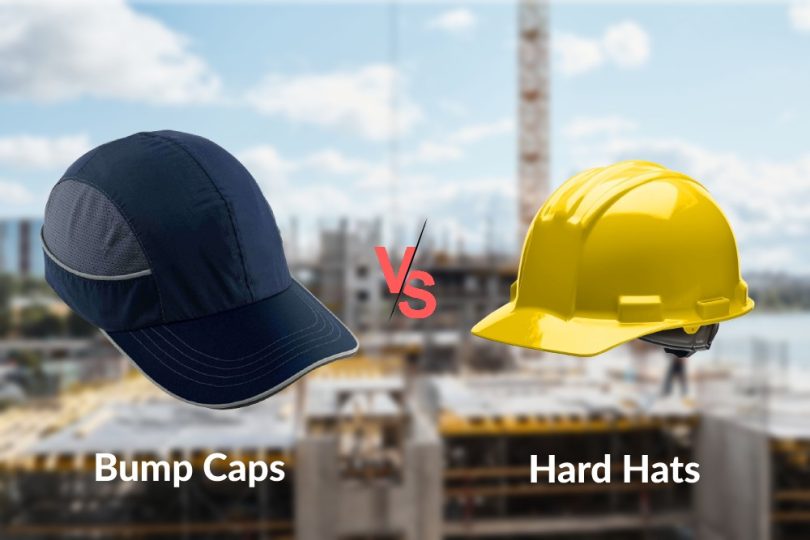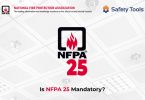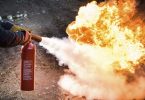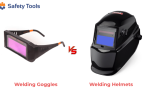Hard hats are worn in work environments where things may fall on your head, such as construction sites.
On the other hand, bump caps are required in environments where you may walk into something, like places with low-height ceilings and a number of machinery with sharp edges.
No matter what you decide to use or what your workplace requires, don’t cheap out on these essential PPEs. After all, you’ve got only one head and you’ve to protect it by any means!
Bump Caps vs Hard Hats: How Do They Differ?
1. Uses
Bump caps are commonly used in:
- In-home services
- Airlines
- Food processing industries
- Manufacturing and assembly
- Mechanics
Hard hats are usually required in:
- Road construction
- Oil and gas industries
- Construction and utility worksites
- Forestry
- At-height work
- General site work
- Mining
2. Comfort and fit
Both hard hats and bump caps are like a plastic shell with interior foam padding. But hard hats have straps that suspend the hat above the head to absorb impacts.
Bump caps are lightweight, comfortable, can be adjusted easily, and provide a secure fit. Although many don’t like their looks, there are now stylish designs, such as those that look exactly like baseball hats.
Hard hats are also easy to adjust but they’re less comfortable and less stable than bump caps. The good news is you can buy accessories like sweatbands for more comfort and better stability.
3. Lifespan
Do hard hats expire? Yes, they do. Although it varies from one manufacturer to another, they usually should be replaced after 3 to 5 years from their manufacturing dates.
That’s not all though. The maximum lifespan refers to the expiration date and you should replace your hat immediately if it has sustained a significant impact (even if the damage isn’t visible).
What about bump caps? There’s no specific lifespan for these types of PPEs but you should replace them if there are impacts or wear and tear.
The lifespan also depends on the materials used. Bump caps made of 100% wool or cotton are washable and more durable. Avoid thin fabrics and low quality materials like nylon or polyester as they lose their shapes easily.
On the other hand, look for hard hats made of fiberglass for optimum protection.
4. Cost
This mainly depends on the style and materials of the safety headgear.
Bump caps are usually cheaper than hard hats but those made of quality materials sometimes cost more.
Also, buying in bulk helps save money. If your employer is eager to meet OSHA requirements the cheapest way and compromise your safety, notify them that they’re legally required to provide quality protective headgear.
5. Design and materials
The construction of a bump cap is simpler than a hard hat. They are built using lightweight materials like plastic, cotton, nylon and foam.
In contrast, hard hats have a complex design, the outer shell of the hat is manufactured using heavy-duty materials like metal, fiberglass, polycarbonate, high-density polyethylene, or plastic.
The inner part of the hat has a high-density foam lining that absorbs the shock energy when hit by anything heavy or any fallen objects.
Airbag cushions are also used in the inner lining to help reduce the impact.
6. Maintenance
The protective properties of bump caps and hard hats could be impacted by conditions like heat, chemicals and mistreatment.
Clean the soiling or dusts of a bump cap with a soft brush and then wash with a mild cleaning soap. Then use a mild disinfectant to disinfect the cap.
For hard hats, check for cracks, tears, holes or any other damage in the outer shell. Inspect the suspension system, headband and other accessories as well.
Clean the outer shell with water and soap as it may collect chemicals and dirts. The OSHA suggests cleaning hard hats at least once a month.
7. Standards and testing
There is no OSHA (Occupational Safety and Health Administration) or ANSI (American National Standards Institute) standard for any type of bump caps, but there is a European standard – EN 812 – to test the performance level.
Look for impact, flame, and penetration resistance and venting to reduce overheating.
However, hard hats do have OSHA and ANSI standards. According to the standard set by OSHA, a hard hat should be water-resistant, slow to burn, absorb the impact caused by an object to the head, and resist penetration by an object.
You can find if a hard hat meets the ANSI requirement by seeing the information printed on the inner part of the hat.
To make sure your hard hat meets ANSI requirements check out the manufacturer’s name, the ANSI standard, the ANSI type (I or II), and the class (G, E, or C), size, and manufacturing date.
Some classes and types may have low temperature marks (LT) and high visibility descriptions (HV).
Advantages and Disadvantages of Bump Caps and Hard Hats
Bump caps
Pros
- Provide safety in low-risk working environments
- Comfortable and lightweight
- Cheaper than hard hats
Cons
- No OSHA or ANSI requirements
- Don’t provide safety from falling objects
Hard hats
Pros
- Save your head from major or minor injuries
- Protect you from electrical threats
- Save you from lateral blows
- Resistant to extreme heats
- More resistant to penetration than bump caps
- Water-resistant
Cons
- A heavier object falling from a considerable height can still damage your spine and neck
- You may find them uncomfortable if worn for a long time
- The peak may obstruct your eyesight
Hard Hats vs Bump Caps: Their Different Types
Bump caps
There are mainly two types of bump caps – the traditional style and the baseball cap style.
Bump cap inserts are found that can be inserted in any baseball cap to convert it to a bump cap.
Hard hats
Hard hats are available in different styles/shapes, classes and colors. According to ANSI, hard hats are of two types:
Type I – designed to provide safety from blows and objects that come from above
Type II – designed to safeguard workers from lateral blows/impacts and top blows/impacts.
Depending on the level of safety from electrical threats they are divided in three classes:
Class G (General) offers protection up to 2,200 volts.
Class E (Electrical) provides protection up to 20,000 volts.
Class C (Conductive) offers no electrical protection, they are designed to protect from blows in the head only.
Make your hard hat choice keeping these factors in mind.
Bump Caps vs Hard Hats: Which One to Choose?
Both bump caps and hard hats are PPE gears used to protect our head from collisions or bumps on worksites.
So, which one of these headgear is ideal for you? This mainly depends on the protection level that you need based on your work environment.
A bump cap will do if your workplace has a low-risk environment. However, if there’s more hazard and a high risk of things/tools falling on your head from above, a hard hat is the obvious choice.
FAQs
1. Are western style hard hats OSHA-approved?
Ans. Yes, they do surprisingly! Here’s a reference for you from OSHA about cowboy style hard hats for your convenience.
2. Are bump caps OSHA approved?
Ans. No, because they’re not ANSI approved either. As a result, you cannot replace your hard hat requirements with bump caps.
3. What do different hard hat colors refer to?
Ans. The color schemes may vary from one site to another but here are the most common uses –
a) White – for engineers, supervisors, and foremen
b) Brown – for those with high heat working environments e.g. welders
c) Green – for new workers and safety inspectors
d) Yellow – for general workers
e) Blue – for technical and temporary workers and carpenters
f) Orange – for visitors, road crew, and new employees









Leave a Comment